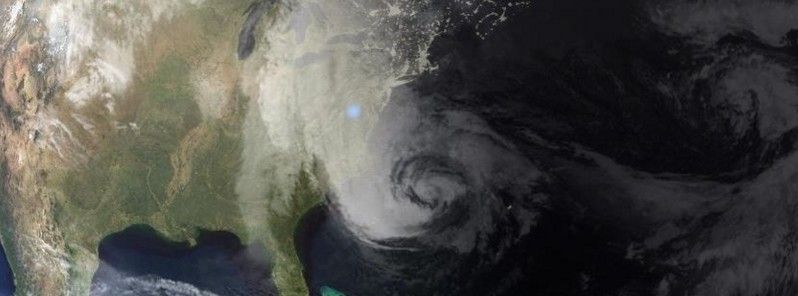Twitter proves as great tool for disaster response and damage assessment

According to a study published today in the journal Science Advances, it is possible to determine the damage caused by a natural disaster in just a few hours, by using data from social networks.
Scientists from NICTA (National Information Communications Technology Australia) and the University of California in San Diego, USA, used Twitter and concluded it is useful for the management, real-time monitoring and even prediction of the economic impact that disasters like Hurricane "Sandy" can have.
The research was carried out by analyzing Twitter activity before, during and after Hurricane "Sandy" which, in 2012, caused more damage than any other storm in US history, with an economic impact in the region of 50 000 million dollars. Hundreds of millions of geo-located tweets making reference to this topic were collected from fifty metropolitan areas in the USA. "Given that citizens were turning to these platforms for communication and information related to the disaster, we established a strong correlation between the route of the hurricane and activity on social networks," says one of the researchers, Esteban Moro Egido.
But the main conclusion of the study was obtained when the data relating to social network activity was examined alongside data relating to both the levels of aid granted by the Federal Emergency Management Agency (FEMA) and insurance claims: there is a correlation between the mean per capita of social network activity and economic damage per capita caused by these disasters in the areas where such activity occurs.
In other words, both real and perceived threats, along with the economic effects of physical disasters, are directly observable through the strength and composition of the flow of messages from Twitter. What's more, Twitter was slightly better than FEMA's own models in predicting the location and severity of damage.
Furthermore, researchers have verified the results obtained from Hurricane "Sandy" and have been able to demonstrate that the same dynamic also occurs in the case of floods, storms and tornadoes; for example, whenever there is sufficient activity on social media to extract such data.
In this way, communication on Twitter allows the economic impact of a natural disaster in the affected areas to be monitored in real time, making it possible to provide information in addition to that currently used to assess damage resulting from these disasters. Moreover, the distribution space of the event-related messages can also help the authorities in the monitoring and evaluation of emergencies, in order to improve responses to natural disasters.
The authors of the study suggest that we are facing an increase in the frequency and intensity of natural disasters as a consequence of climate change. "We believe that this is going to cause even more natural disasters and, therefore, the use of social networks will allow us to obtain useful supplementary information," points out Professor Esteban Moro, who is currently working on further research in this area. "We are trying to see if there is a relationship between activity on social networks and climate change which will affect us in the future".
Abstract of the paper:
Could social media data aid in disaster response and damage assessment? Countries face both an increasing frequency and an increasing intensity of natural disasters resulting from climate change. During such events, citizens turn to social media platforms for disaster-related communication and information. Social media improves situational awareness, facilitates dissemination of emergency information, enables early warning systems, and helps coordinate relief efforts. In addition, the spatiotemporal distribution of disaster-related messages helps with the real-time monitoring and assessment of the disaster itself. We present a multiscale analysis of Twitter activity before, during, and after Hurricane Sandy. We examine the online response of 50 metropolitan areas of the United States and find a strong relationship between proximity to Sandy’s path and hurricane-related social media activity. We show that real and perceived threats, together with physical disaster effects, are directly observable through the intensity and composition of Twitter’s message stream. We demonstrate that per-capita Twitter activity strongly correlates with the per-capita economic damage inflicted by the hurricane. We verify our findings for a wide range of disasters and suggest that massive online social networks can be used for rapid assessment of damage caused by a large-scale disaster.
Reference:
- Rapid assessment of disaster damage using social media activity – Yury Kryvasheyeu, Haohui Chen, Nick Obradovich, Esteban Moro, Pascal Van Hentenryck, James Fowler and Manuel Cebrian – Science Advances – March 11, 2016: Vol. 2, no. 3, e1500779 DOI: 10.1126/sciadv.1500779 – OPEN ACCESS
Featured image credit: Hurricane "Sandy" in the Atlantic. Credit: NOAA/GOES / Living Earth

Commenting rules and guidelines
We value the thoughts and opinions of our readers and welcome healthy discussions on our website. In order to maintain a respectful and positive community, we ask that all commenters follow these rules.